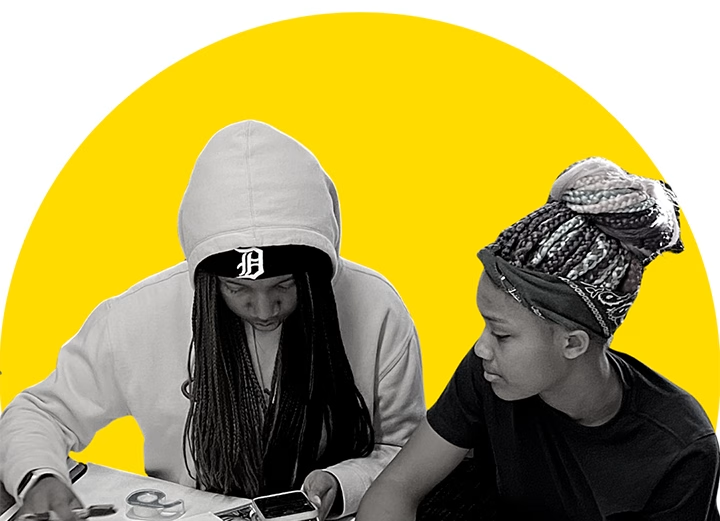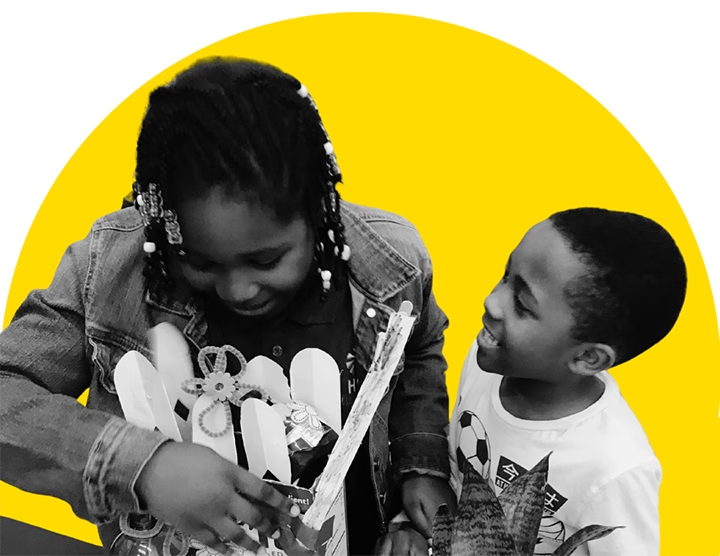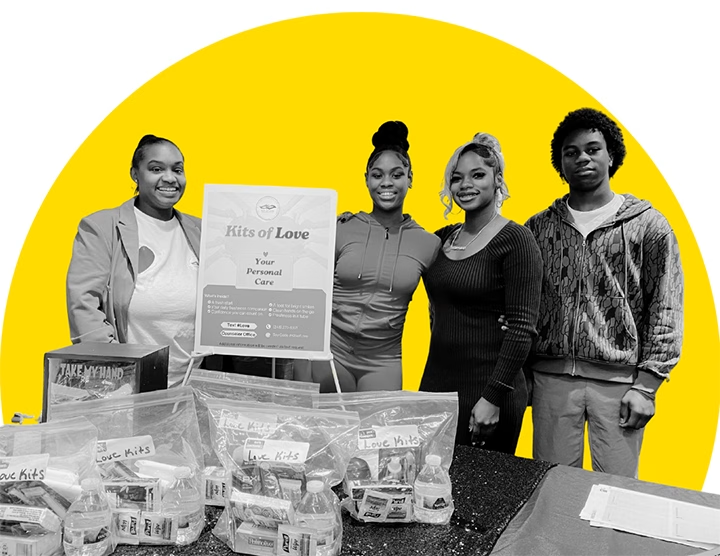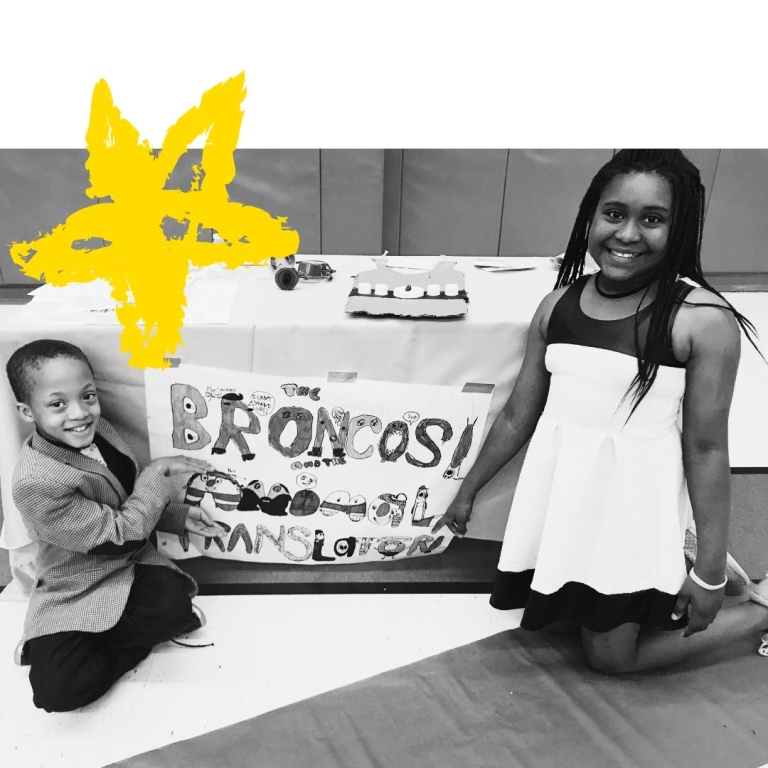We live in a world that is transforming with increasing speed, complexity and lack of clarity – and we need to prepare students to be able to thrive and lead positive change now and for a future that is constantly evolving and impossible to predict with any certainty.

We need our young people to be strong and self-directed learners – ones who are adaptive, creative, resilient and persistent. In addition, employers are increasingly prioritizing skills like critical thinking, innovative problem-solving, and collaboration. Project-based learning offers a strong approach for developing these essential competencies and others. When educators leverage tools and methods from design thinking, students are able to engage in a structured process that enables them to develop solutions to meaningful real-world challenges, providing them with opportunities to make a difference in their community and preparing them with essential future-of-work readiness skills.
At HFLI, we define design thinking as a collection of methods and mindsets that enables us to explore problems creatively, then reframe and act upon them. Using this adaptive process, students work to build an understanding of a problem and how people are affected by it, narrow to a strongly defined focus, generate possible solutions, build and test prototypes to continue their learning, and enact their solution ideas. Along the way, they gather feedback and iterate on their designs.
Incorporating design thinking into project-based learning significantly enhances the students’ learning journey. Here are five that stand out:
1. Enhances student ownership and engagement
Students learn best when they can make choices about their learning and feel that their work has meaning. Design thinking immerses learners in addressing real-world challenges that matter to them and brings the needs of others to the forefront through its emphasis on empathy – building awareness and understanding of the needs and perspectives of those who experience the challenge directly. Whether it’s redesigning the school cafeteria to be more environmentally friendly or developing ways to welcome a new student to their classroom, choosing the problem definition and focusing on how to improve a situation for others increases students’ desire to learn, drives persistence to work hard and builds purpose to their work.
Learning in Action: Ninth-grade students at HFA Alameda School (San Antonio, TX), exploring their civic rights and responsibilities, used design thinking to develop ways to address housing insecurity in their community. They interviewed local shelter staff and volunteered in client-support events to gain insights into what it means to be housing insecure. They leveraged their new awareness to design a specialized backpack that addressed the unique challenge of carrying everything you own with you wherever you go.
2. Develops critical thinking and creative problem-solving skills
In today’s society, we need young people who are agile learners, thinkers and do-ers. Design thinking provides them with a wide range of tools and methods to analyze complex problems to identify ways to address them. It guides students to ask strong questions, consider multiple ways to interpret and assess information critically, synthesize that information into actionable ideas and generate innovative responses – key competencies employers are looking for when they hire.
Learning in Action: A team of HFA Elementary School (Detroit, MI) 5th graders and their teacher wanted to promote health and well-being in their school. By observing what students do during recess and at lunch, they noticed that some students sat on the playground benches, played alone, or ate by themselves. Using empathy maps to organize what they saw and heard, they decided to build a Bench Buddy system to actively invite disconnected students into their friend circles.
3. Fosters collaboration and communication

Strong ideas for positive change are rarely, if ever, developed by a team of one. Design thinking compels students to work together, engage the people they are trying to serve and co-create their solutions. Student designers interview stakeholders, collaborate to interpret their findings, share their ideas and negotiate to select the path to a solution. They engage in active listening, formulating coherent statements, giving and receiving feedback – all important to the current and future work environment
Learning in Action: HFA Elementary kindergarten and first-grade students were tasked with developing a new habitat for their classroom pet – a bearded dragon. As a class, they came up with important questions and took a field trip to a local zoo to learn from zookeepers about what different animals need and how the keepers respond. Small groups (with strong teacher support) worked together to decide what they wanted to add to their pet’s habitat and who would be responsible for which aspect of each choice.
4. Builds Resilience through Iteration and Reflection

Finding out something doesn’t work isn’t failure – it’s simply an opportunity to learn what we can rule out on the way to finding what does work. Design thinking explicitly includes gathering feedback from the people who will use the solution, incorporating that information into the next version and continuing to improve the final product, service or experience to its strongest outcome. Gaining experience in this iterative process provides students with the opportunity to strengthen their understanding that learning happens over time and how to push through obstacles to reach their goals.
Learning in Action: Students from a Metro Detroit middle-high school identified that student mental health is a high-priority need in their learning community. Working to increase awareness of the supports that are available in their school, they prototyped multiple solutions: an app that has links to resources, a student group that provides a prepared presentation at the all-school assembly, and posters in the cafeteria with access information. By analyzing the data on which idea garnered the most positive response, they ultimately chose the solution that worked for their particular community.
5. Prepares Students for the Future of Work

Challenges in the workplace require people to be entrepreneurial, innovative and adaptive in their approach to their jobs – whether they work for an employer or themselves. Design thinking equips students with many of the key competencies that will set them up for success. By engaging in authentic work to address real-world problems, they grow their skills, build their confidence and foster their capacity to be lifelong and self-directed learners – ensuring they are prepared to tackle whatever comes next.
Learning in Action: HFA Dearborn (Michigan) high school juniors who are completing their Senior Mastery Process internship requirement use design thinking to envision, frame, develop, and execute a unique project to address a challenge of their choice. They collaborate with their business partner supervisor to ensure it meets the standards or requirements of their industry and provides value to the organization.
Bringing Design Thinking into Your Classroom
Incorporating design thinking into your PBL doesn’t require you to completely change the way you support learning. You can start with small steps – choosing one tool or method to support an activity that you want students to experience. You might introduce the process of interviewing experts related to their research projects, encourage them to visualize their thinking, or have them practice giving, receiving, and incorporating feedback from others as a starting point. The key is to foster a culture that engages them as active decision-makers, thinkers, and doers in their own learning – one in which they see themselves as confident and capable problem-solvers, ready and able to tackle challenges with creativity and collaboration.
By integrating design thinking into your project-based learning, you provide a powerful foundation for students to grow, thrive, and lead positive change in their communities and workplaces. The kind of people we want taking us into our future world.
Ready to bring design thinking into your students’ project-based learning?
Let’s start the conversation. We’d love to learn about your goals and share how we can support you.
Email Us to Connect


